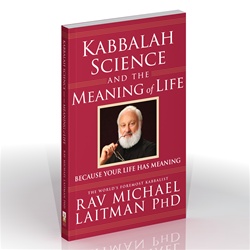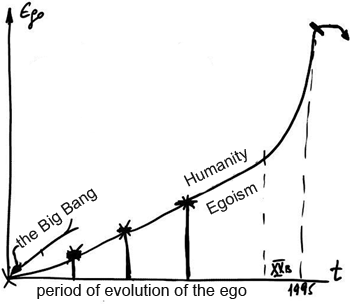Why Evolution Is Really All About the Development of a Desire for Pleasure
The essence of human nature is its perpetually evolving desire for pleasure. To realize this desire, we feel compelled to discover, invent, and improve our reality. The gradual intensification of the desire for pleasure has been the force behind human evolution throughout our history.
The desire for pleasure evolves through several stages. In the first stage, it manifests in the need for sustenance, such as food, reproduction, and family. In the second stage, the desire for wealth arises, and in the third, there is a craving for honor, power, and fame. Development of these three stages had lead to major changes in human society—it became a diversified, multi-class society.
The fourth stage signifies our yearning for learning, knowledge and wisdom. This expresses itself in the development of science, educational systems, and culture. This stage has become associated with the Renaissance and the Scientific Revolution, and is still predominant today. The desire for knowledge and erudition requires that we understand our surroundings.
To understand the present state of humanity and its prospects, we must build a bridge connecting several milestones in the evolution of science. These milestones have significantly affected our approach to life.
How the Evolution of Thought Led to the Development of Empirical Science
The Scientific Revolution that occurred during the 16th century brought radical changes in our thought patterns. At the time, researchers believed that theories must be tested against experiments and observations. They also cautioned us to avoid mythological and religious explanations. At the center of scientific thinking was an analysis of reality, and the search for scientific answers to age-old questions. Until then, these topics had been ascribed to a divine power.
In his book, Mathematical Principles of Natural Philosophy (1687), Isaac Newton (1642-1727) proposed a theory of mechanics that would let us calculate the change in the motion of any body when influenced by a given force. The success of Newton’s theory presented a whole new worldview. Newton’s deterministic viewpoint stated that in any event, regardless of its nature, a certain natural law will manifest. The presence of the Divine was of little importance because the trajectory of all motion is fixed, and there was no intervention by the Divine.
The deterministic approach was well described by the astronomer, Pierre Simon Laplace (1749-1827) as he sought to explain to Napoleon how our solar system had been formed. When Napoleon asked him about God’s place in the process, Laplace replied: “Je n’avais pas besoin de cette hypothèse-là” (“I did not need this hypothesis there”).
Thus, science left no room for the existence of other aspects beyond its own limits, including those realities that are hidden from our perception. Everyone believed that humanity had discovered the necessary measures to know the world as it really was.
In the late 1800s, it seemed that classical physics had provided researchers with a complete set of laws for every natural phenomenon. Many researchers maintained that these laws would help them explain even the few phenomena that remained mysteries. Since physics has always been considered “the mother of all sciences” and the forefront of technology and experimentation, its discoveries served as the foundation for research in other sciences, as well.
The Turning Point: Einstein and the Discovery of the Observer’s Relationship to Reality
The era of modern physics began in the early 1900s with Albert Einstein’s (1879-1955) revolutionary discoveries. Einstein’s Theory of Relativity generated a fundamental change in attitude towards everything that had previously been known about time, space, mass, motion, and gravity. Einstein’s theory unified time and space into a single entity—time-space—revoking the premise that time and space were absolute.
In the 1930s, another theory emerged: Quantum Mechanics, also known as Quantum Theory. This spurred an ongoing revolution in physics whereby all measurements yielded only approximate, quantitative results, probabilities that Quantum Theory calculations would interpret.
Quantum Theory was able to describe several phenomena that could not be explained by preceding theories. The most famous of these was wave-particle duality, showing that microscopic objects such as electrons behave as waves under some conditions, and as particles under others.
A fundamental concept of Quantum Theory is the Uncertainty Principle, which maintains that the observer affects the observed event. Hence, the key question is, “What do the measurements actually measure?” This principle implies that the concept of an “objective process” becomes irrelevant. Moreover, beyond the measured results, an “objective reality” simply cannot exist.
The discoveries of Quantum Physics drastically changed scientists’ approach. The deterministic concept that maintained that physics revealed objective facts of nature and described their absolute existence was dismissed.
It was replaced by an understanding that physics does not know the true essence of nature. Physics can only assist in building paradigms, patterns, and formulae that calculate results of an experiment within a certain boundary of probabilities.
Now You Can Understand the Profound Limits of Modern Science
Contemporary science differentiates between the “actual reality” that exists independent of the observer, and the reality that the observer can describe. Today, researchers understand that what had once been defined as “absolute fact” is destined to give way to new conclusions and new experiments. These, in turn, will yield to ever-newer formulae and experiments.
It is now evident that science does not present the absolute truth, but rather a picture of the world as depicted through current experiments, perceptions, and paradigms. Moreover, the greater our knowledge of the world, the greater the uncertainties and contradictions we face.
Acknowledging the above has significantly diminished the predominance of natural science in general and physics in particular. Instead, it positioned science as a tool that uncovers a limited part of reality, rather than the absolute truth. The actual reality is hidden from us; we cannot discover it by means of scientific research.
In recent years, many scientists have become interested in various religions, new age theories, and mysticism. They are trying to find new tools and new ways to understand the hidden parts of reality, those unattainable by using conventional research methods.
This scientific predicament has escalated into a crisis since the turn of the century, challenging our ability to expose the full picture of the world we live in, and to understand the rules that govern both nature and humanity.
Why Kabbalah Is the Practical Continuation of Experiment Based Science
Once humanity exhausted its desire for knowledge and erudition and the visible reality had been researched, a new desire surfaced—to know the highest of concepts and the hidden part of reality. This is the stage of the evolution of desires that humanity has reached today.
This is the background for the appearance of the wisdom of Kabbalah, which offers humanity a new perspective, a scientific worldview that Kabbalists discovered thousands of years ago. Our current desire to know all of reality shows that humanity is ready to be exposed to Kabbalah.
The Kabbalistic perception of the world includes premises that religions accept on faith, coupled with a scientific approach. Kabbalah develops tools within us that welcome us into a comprehensive reality and provide means to research it.
Kabbalah is a science that explores the aspects of reality hidden from scientists. When we discover those hidden parts, our knowledge of the world we live in will be complete. By uniting both the hidden and the revealed, we will prepare ourselves for accurate scientific research and the discovery of the genuine formulae.
By uncovering the hidden, our view of the world will become complete, liberated from the boundaries of relative perception and we will be able to unveil the existence of every part of reality, beyond time, space and motion. The Wisdom of Kabbalah grants all the above to anyone who truly seeks it.
 “The Hidden Link between Evolution and Kabbalah” is based on the book, Kabbalah, Science and the Meaning of Life by Dr. Michael Laitman.
“The Hidden Link between Evolution and Kabbalah” is based on the book, Kabbalah, Science and the Meaning of Life by Dr. Michael Laitman.

